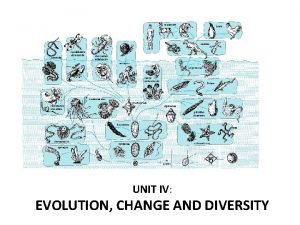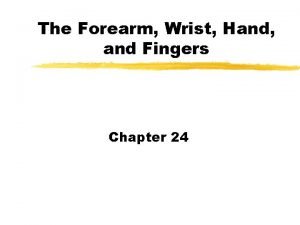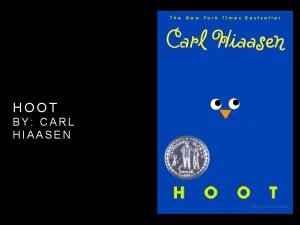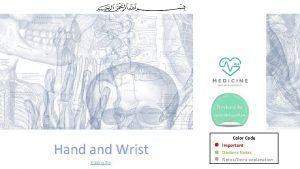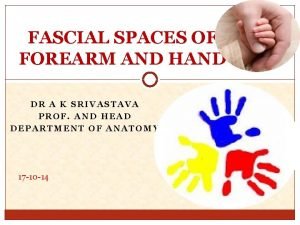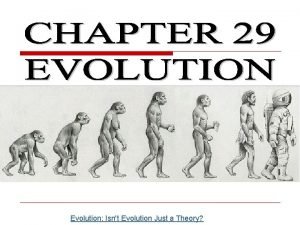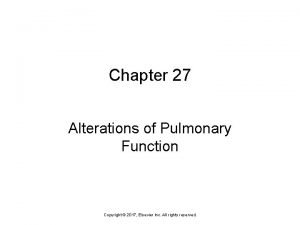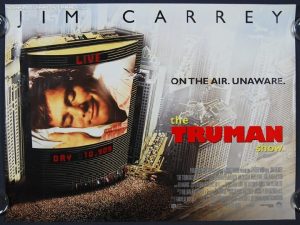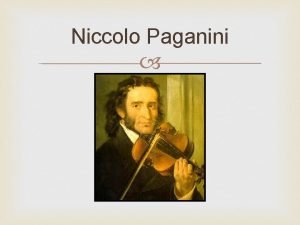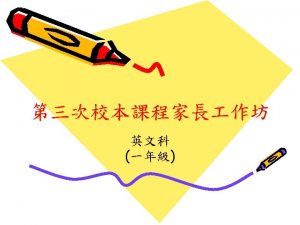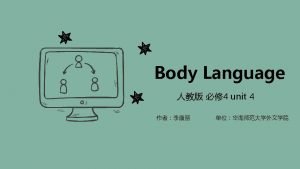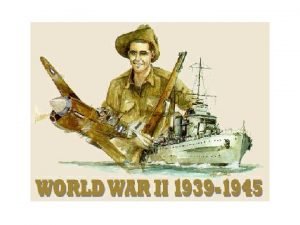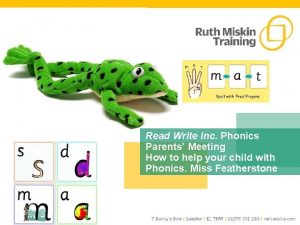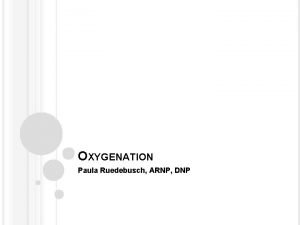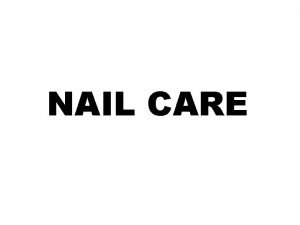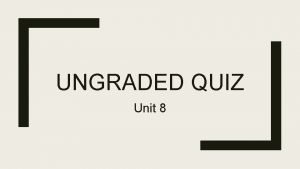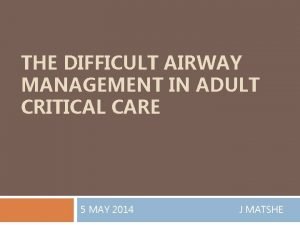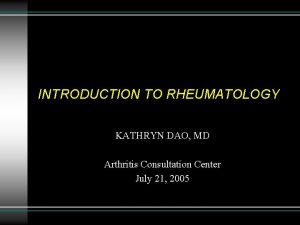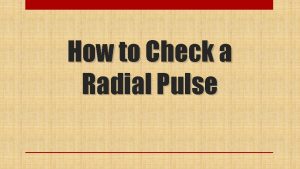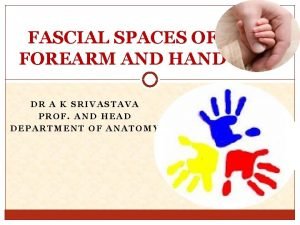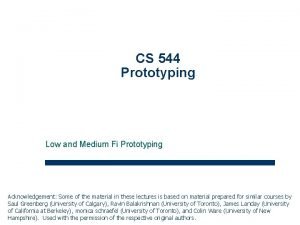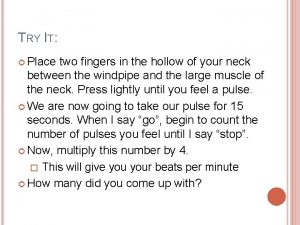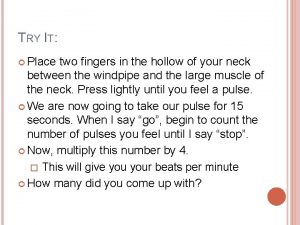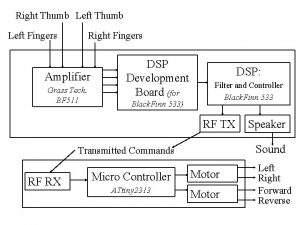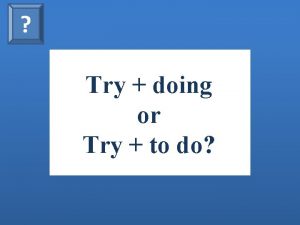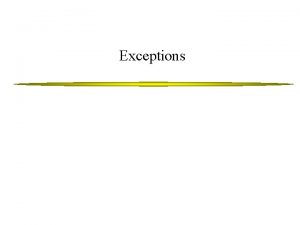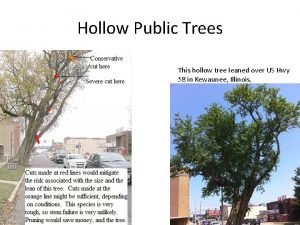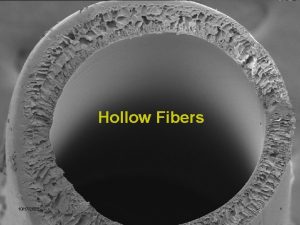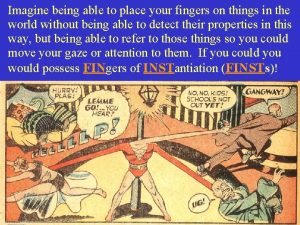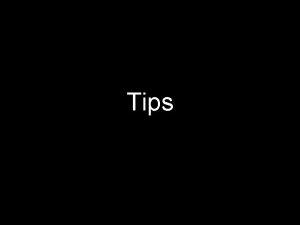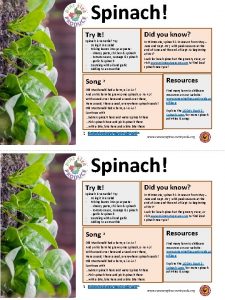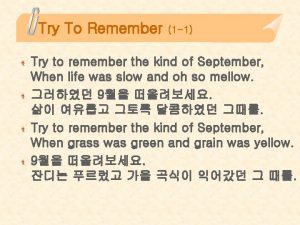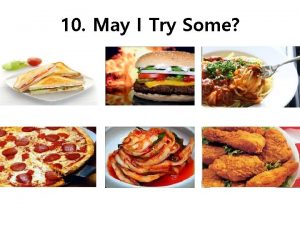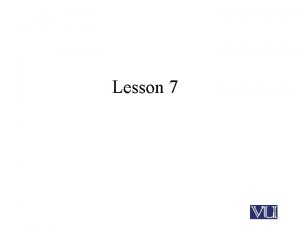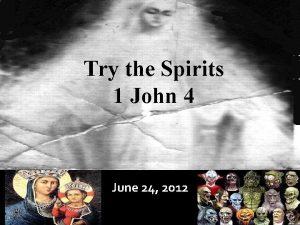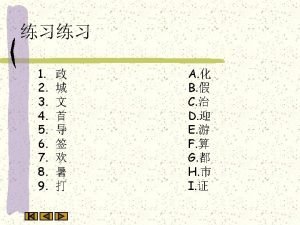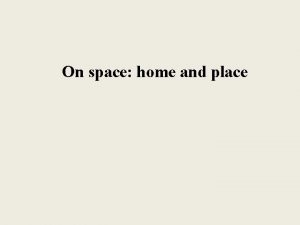TRY IT Place two fingers in the hollow



































- Slides: 35

TRY IT: Place two fingers in the hollow of your neck between the windpipe and the large muscle of the neck. Press lightly until you feel a pulse. We are now going to take our pulse for 15 seconds. When I say “go”, begin to count the number of pulses you feel until I say “stop”. Now, multiply this number by 4. � This will give your beats per minute How many did you come up with?

THINK ABOUT IT: A normal human adult resting pulse has between 60 -100 beats per minute Is yours in this range? How do you think the heart rates of livestock species compare to humans? When would you think that an animal would have an elevated heart rate? Why is this important to us?

CIRCULATORY SYSTEMS OF LIVESTOCK SPECIES By: Ms. Ryan

OBJECTIVES: ü Define the circulatory system. ü Discuss how the circulatory system works. ü Define the components of the circulatory system. ü Analyze the components of the circulatory systems and their functions. ü Describe blood analysis and why it is important.

SO WHAT IS THE CIRCULATORY SYSTEM ANYWAY? Definition: the bodily system consisting of the heart, blood vessels, and blood that circulates throughout the body, delivers nutrients and other essential materials to cells, and removes waste products. Consists of: Heart Blood vessels Veins

CIRCULATORY SYSTEM Often helps stabilize body temperature and p. H Can you think of an example of this in humans? �Going into shock if your blood pressure is at an extremely low level �Others?

HOW IT WORKS Vertebrates have a closed circulatory system, which generally confines the blood within its walls Blood flows through two circuits through a partitioned heart that works as two side by side pumps This double circuit supports the high levels of activity that is characteristic of most vertebrates

THE HEART Definition: a four-chambered, hollow muscle used to pump blood. Divide into four compartments: Left Ventricle Right Ventricles: Left Atrium Right Atrium pump blood into arteries Atrium: the chamber of the heart that receives blood

THE HEART Right side of the Heart: �pumps deoxygenated blood (blood low in Oxygen) to the lungs Left side of the Heart: �pumps oxygenated blood (blood rich in Oxygen) all over the body

CROSS SECTION OF A HORSE’S HEART

BLOOD VESSELS Three kinds: arteries, capillaries, veins Arteries: carry blood away from the heart � Divide into arterioles, which are small arteries that are controlled by the nervous system to regulate blood pressure Capillaries: microscopic blood vessels with a wall formed of one layer of simple squamous cells � Beds of capillaries are very prevalent in the body � When an animal eats, capillary beds of the digestive system open � So narrow that red blood cells must pass through in single file

BLOOD VESSELS Venules: vessels that take blood from capillaries and join to form a vein Veins: transport blood toward the heart � Walls are much thinner than arteries � No blood pressure � One-way valves open in the direction of the heart and close to prevent back flow

BLOOD Blood: the liquid in the circulatory system of an animal organism Organisms cannot live without it All animals have it, but its nature varies from one species to another Amount varies with the species and size of animal

BLOOD An average adult human weighing 160 pounds has about 5 quarts of blood Animals in high altitudes have more blood than those at lower altitudes because air at higher altitudes has less oxygen What do you think will happen if animals from higher altitudes are moved to lower altitudes?

BLOOD CONSISTS OF: Plasma: the liquid substance in which various solid materials are suspended and moved about � 90% water � 10% = dissolved substances including hormones, wastes, minerals, vitamins, and proteins

BLOOD CONSISTS OF: Red blood cells: responsible for carrying oxygen from the lungs throughout the circulatory sysem �Oxygen carried by hemoglobin: a protein part of the blood �Do not repair themselves �New cells are made in bone marrow �Dead cells are removed by the spleen and liver �One animal may have a trillion blood cells!

BLOOD CONSISTS OF: White blood cells: responsible for fighting disease and removing harmful substances from the body �Four different kinds found in blood �Some cells surround and digest infectious bacteria �Produce antibodies: a kind of protein that destroys bacteria, viruses, and other invasive substances WBC counts go up if there is an infection

BLOOD CONSISTS OF: Platelets: the structures in blood that are responsible for clotting � Disk-like shape � Creates scabs � Without them, an animal might bleed to death from a wound

THE ACTUAL PROCESS: Heart pumps blood into the body through arteries and capillaries Blood returns in the veins Circulation includes moving blood: �through the lungs by receiving oxygen and giving off carbon dioxide �by the liver and spleen for cleaning �throughout the entire body to support life processes

BLOOD’S ROLE AS A TRANSPORT Carries oxygen to all areas of the body and acquires carbon dioxide from the respiration process in the cells Protects against disease (white blood cells) Transport hormones Transport nutrients and wastes Heat regulation �Skin uses some of the liquid in blood as sweat

MAINTAINING BLOOD SUPPLY Regulation �Amount of blood and proportions of materials in blood is regularly being adjusted to meet demands of the body Replacing �Blood worn cells and platelets produced in bone marrow �Marrow: the soft substance in the middle of bones, can be red or yellow

MAINTAINING BLOOD SUPPLY Controlling bleeding �Coagulation: a complex process initiated by injured tissues giving off signals indicating bleeding is occuring �Clotting factors result in formation of fibrin: creates a blockage that stops the loss of blood from the wound �Blood also has substances that dissolve clots where they are not needed (example: arteries)

MAINTAINING BLOOD SUPPLY Organisms that lose blood may be given blood taken from another animal with the same blood type, which is called a blood transfusion �More common in humans and domesticated animals �Can transmit disease �Should only be done by trained individuals

BLOOD ANALYSIS Definition: the process of testing blood to determine its characteristics Samples collected and tested Primarily used in determining an animal’s health Also used to determine nutritional adequacy �Anemia: the condition caused by inadequate Iron

BLOOD ANALYSIS Determine the presence of pathogens, which are microorganisms that cause disease Blood poisoning: a condition in the blood caused by the presence of bacteria or fungi that cause disease

CIRCULATORY SYSTEM OF CATTLE

EQUINE CIRCULATORY SYSTEM

OVINE CIRCULATORY SYSTEM

CIRCULATORY SYSTEM OF POULTRY Department of Biological Sciences. Eastern Kentucky University BIO 554 Ornithology

CIRCULATORY SYSTEM OF POULTRY

CIRCULATORY SYSTEM OF SWINE

REVIEW What are the 4 compartments of the heart? �Left and right atriums, left and right ventricles Does the right side of the heart pump oxygenated or deoxygenated blood to the lungs? �Deoxygenated True or False: The left side of the heart pumps oxygenated blood all over the body. �True

REVIEW What are three kinds of blood vessels? �Arteries, capillaries, veins What are the small arteries that are controlled by the Central Nervous System and regulate blood pressure? �Arterioles Do arteries carry blood away from the heart or to the heart? �Away from the heart

REVIEW True or False: Veins transport blood toward the heart �True _____ are the vessels that take blood from capillaries and join to form a vein �Venules

REVIEW An average adult human weighing 160 pounds has about how many quarts of blood? � 5 Quarts True or False: Animals in high altitudes have less blood than those at lower altitudes �False
 Place place value and period
Place place value and period Repeating disturbance that transfers energy
Repeating disturbance that transfers energy A disturbance that transfers energy from place to place.
A disturbance that transfers energy from place to place. Convergent evolution
Convergent evolution Fingers poet x
Fingers poet x Chapter 24 the forearm, wrist, hand, and, fingers
Chapter 24 the forearm, wrist, hand, and, fingers Carl warner biographie
Carl warner biographie Palmaris brevis
Palmaris brevis Vulcan fingers genetics
Vulcan fingers genetics Fascial space
Fascial space 5 fingers of evolution
5 fingers of evolution Mullet fingers now
Mullet fingers now Bulbous enlargement of the distal segments of the fingers
Bulbous enlargement of the distal segments of the fingers Chapter 15 section 3 shaping evolutionary theory
Chapter 15 section 3 shaping evolutionary theory Truman show fingers crossed meaning
Truman show fingers crossed meaning Disco fingers
Disco fingers Mark anthony fernandez vaccination
Mark anthony fernandez vaccination Fingers fing
Fingers fing Knowit it
Knowit it Couch potato figurative language
Couch potato figurative language Best phone for fat fingers
Best phone for fat fingers Every person in the world
Every person in the world Ruth miskin fred talk games
Ruth miskin fred talk games Hypoxaemia vs hypoxia
Hypoxaemia vs hypoxia An envelope covering the tips of the fingers and toes
An envelope covering the tips of the fingers and toes Dawson fingers ms
Dawson fingers ms Show me your fingers
Show me your fingers Difficult airway algorithm
Difficult airway algorithm Elbows off the table fingers off the food song
Elbows off the table fingers off the food song Finger position in keyboard
Finger position in keyboard Esr raised causes
Esr raised causes Radial pulse 3 fingers
Radial pulse 3 fingers Muscles of forearm posterior compartment
Muscles of forearm posterior compartment Superficial fascia of hand
Superficial fascia of hand Palmar fascial spaces
Palmar fascial spaces Low fidelity storyboard
Low fidelity storyboard



